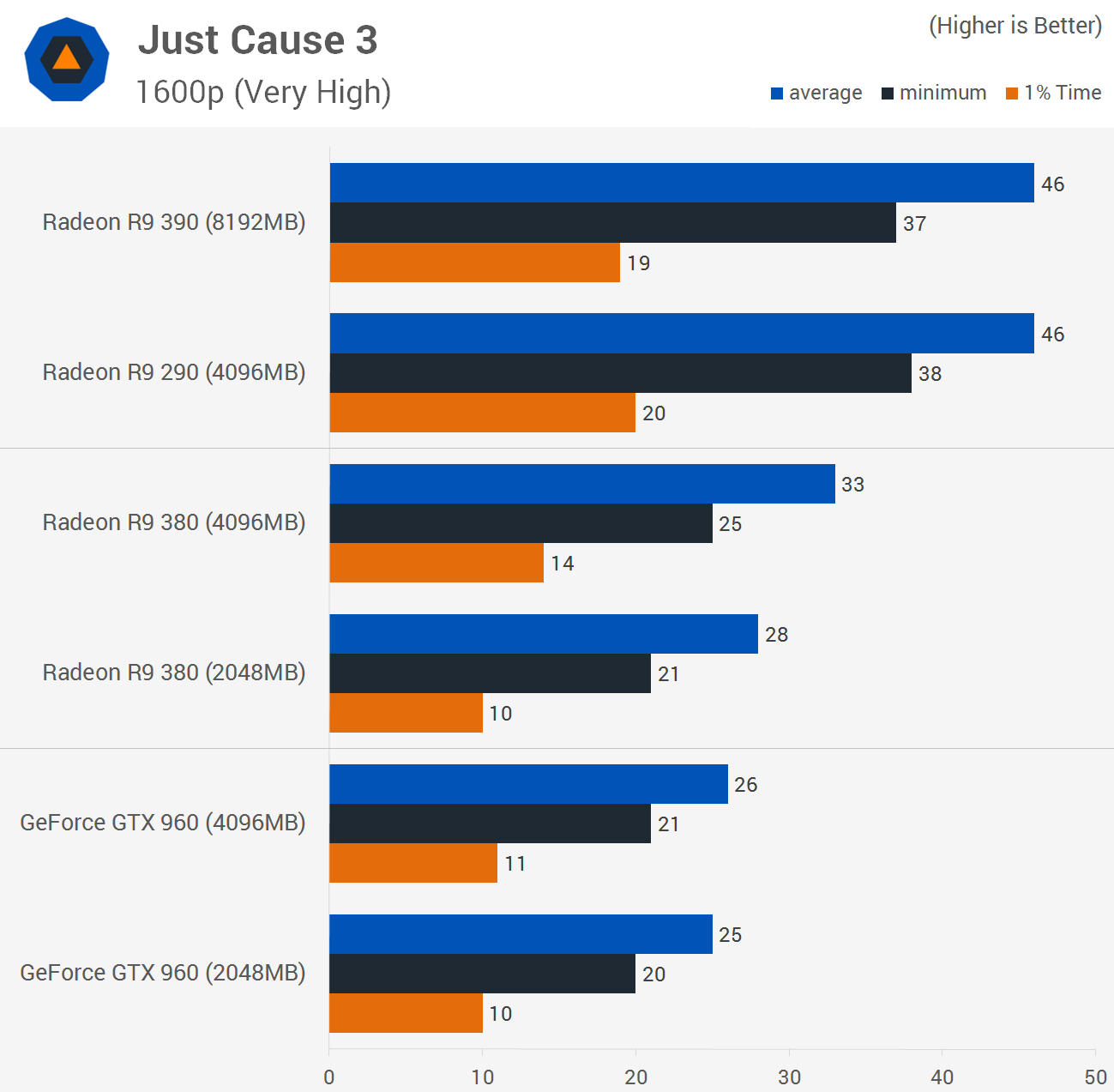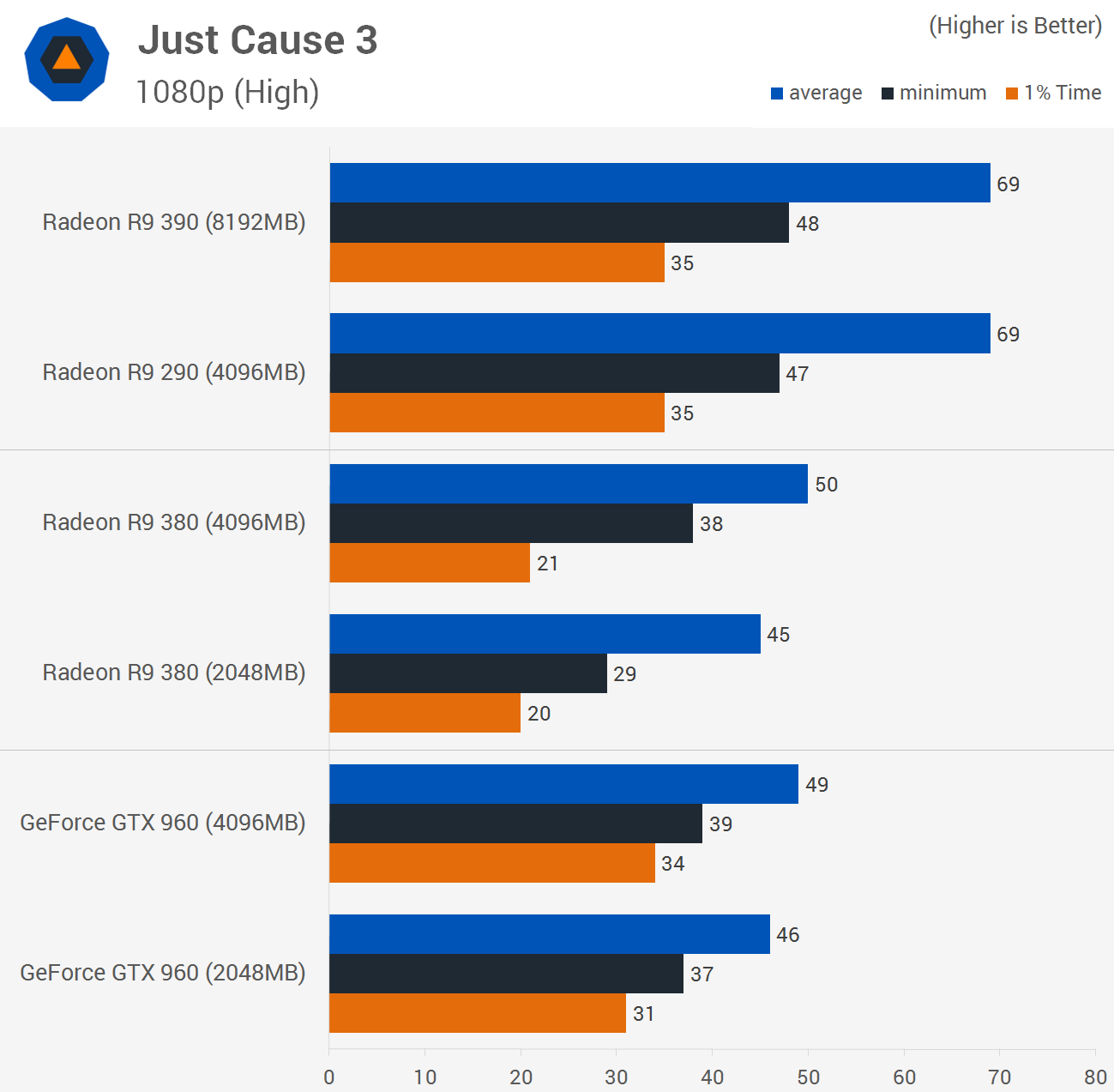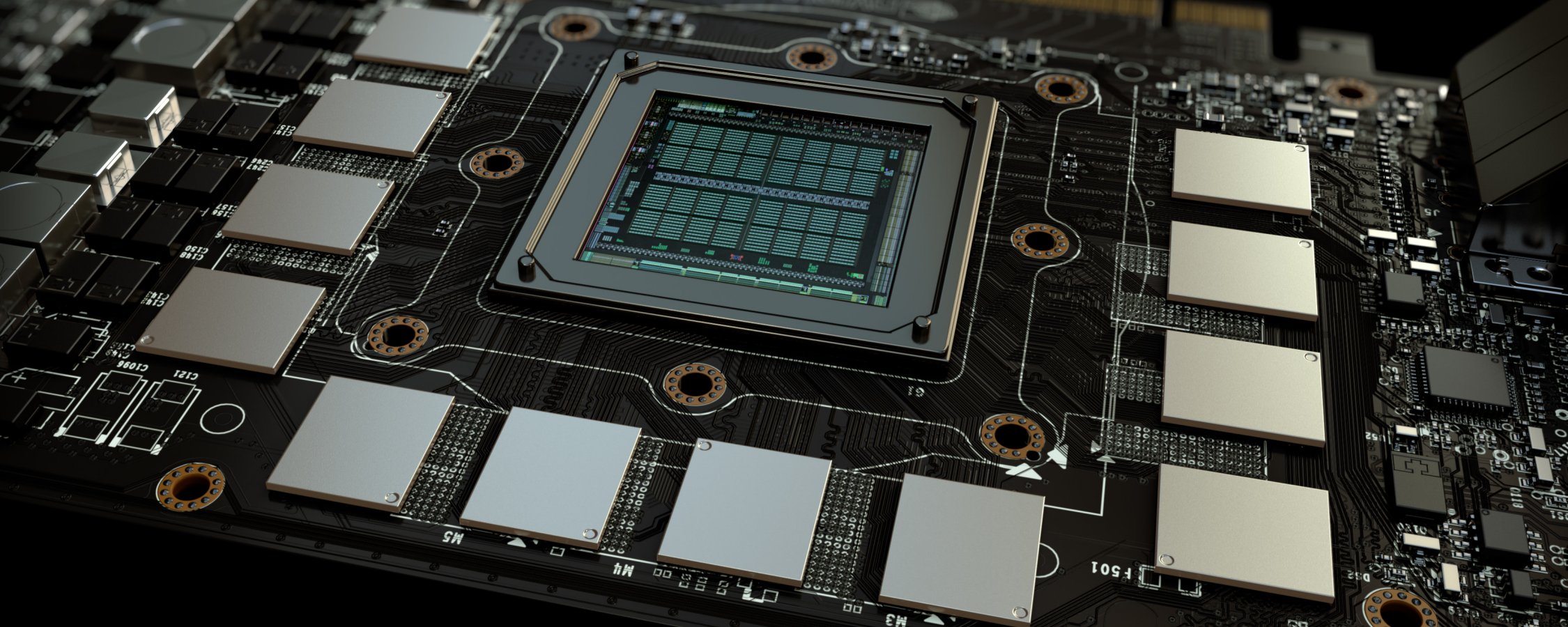Benchmarks: Just Cause 3, Star Wars Battlefront, Dying Light

Testing with Just Cause 3 at 1080p using the maximum in-game quality settings shows no difference in performance when comparing the 2GB vs. 4GB cards, so obviously the same was found for the 4GB vs. 8GB comparison.

Now at 2560x1600 we find that Just Cause 3 consumed 3.4GBs of VRAM when available and yet despite that the GTX 960 delivered much the same performance using either the 2GB or 4GB card. The R9 380 on the other hand was 18% faster with 4GB's of VRAM, but with an average of 33fps, and frame drops as low as 25fps or 14fps for the 1% results, we question the playability at these settings.

Interestingly we didn't see a performance difference between the 2GB and 4GB graphics cards when testing at 1080p using the very high quality settings. Yet at the same resolution with the slightly lower quality high settings we see that the 4GB 960 and 380 are faster than their 2GB parts. While the 960 margins were slim, the 4GB 380 has a clear performance advantage over the 2GB mode.

Finally at 2560x1600 using the high quality settings we see that the 380 and 960 struggled to deliver playable performance in any configuration, while the 4GB 290 and 8GB 390 delivered similar performance.

Testing with Star Wars Battlefront using the maximum in-game quality settings at 1080p saw the GTX 960 2GB and 4GB cards deliver the same performance, as did the R9 390 and R9 290. The R9 380 was on the other hand 10% faster when equipped with 4GBs of VRAM, reaching 54fps opposed to just 49fps for the 2GB card.

Jumping up to 2560x1600 we observed no more than 3GBs of VRAM being used in Star Wars Battlefront and as such the R9 290 and R9 390 provided the same performance. This was also true for the GTX 960 while the 4GB R9 380 was slightly faster than the 2GB model.

Again we find that while all other cards deliver the same performance regardless of memory capacity, the Radeon R9 380 favours the 4GB model. Still with an average of 68fps and never dipping below 58fps, the 2GB 380 is more than capable at these settings.

Even at 2560x1600 the R9 380 2GB model is able to deliver similar performance to the 4GB version with 45fps opposed to the 4GB's 48fps.

Using the very high textures in Dying Light at 1080p we see that the 4GB versions of the GTX 960 and R9 380 are unable to outperform their 2GB alternatives.

Even at 2560x1600 the 2GB and 4GB models deliver similar performance in Dying Light despite the R9 380 only averaging around 30fps and the GTX 960 just 27fps. This is surprising as the game was seen to use 3.5GB's of VRAM when available.

Lowering the quality settings to medium saw all graphics cards run into a CPU bottleneck at 1080p. The driver overhead issue of the AMD graphics cards can be seen when comparing the minimum frame rates to those of the GTX 960 graphics cards.

Finally at 2560x1600 using the medium quality settings the CPU limitations are mostly done but even so the 2GB and 4GB cards still delivered the same performance.
